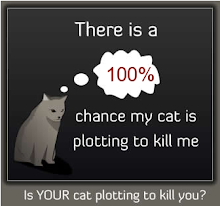Thelma Lee Gross, DVM, is a regular contributor to Bright Nepenthe. This week she is sharing her thoughts on humane farming in a three part series, Eating Animals.
Eating Animals, Part 1
When humans were hunter-gatherers and food production was the business of small farms and family units, the concept of animal ethics was moot: if you didn’t care for your animals humanely, you would not survive. In the modern world, productivity has become separated from welfare. This is because we have found ways to keep animals healthy enough to produce without also considering, as Marian Stamp Dawkins says simply in the superb book, The Future of Animal Farming, “what animals want.” Technology and science have allowed us to raise animals in an industrial setting that does not necessarily consider the need for a decent life, which includes positive aspects like fulfillment of natural behavior, but also avoidance of negative factors, such as stress, boredom, and fear.
The problem of factory farming
In The Omnivore’s Dilemma (p. 318), Michael Pollan states that
“…..tension has always existed between the capitalist imperative to maximize efficiency……..and the moral imperatives of culture…. [There is a] tendency over time for the economic impulse to erode the moral underpinnings of society. Mercy towards animals in our care is one such casualty.”
The industrialization of food animal production has eroded our mercy towards the creatures that supply our food. We buy it neatly packaged in the supermarket and look the other way. High demand for food animal products in wealthy and emerging countries is accentuated by the steady force of increasing population. With the economies of scale at work, farms have become larger and the individual attention to animals has weakened. Animals are raised in denser populations to maximize the number per unit of human labor. This decreases the opportunity that the farmer has to know individuals, while emphasizing the herd approach. Even at the level of the farm, therefore, food production has become impersonal.
The “healthy” closely confined, productive, factory-farmed animal is often achieved only by grace of the recurrent administration of antibiotics, without which closely confined animals cannot survive exposure to disease. This intense confinement may result in the need for preventative surgical intervention (tail docking in pigs, beak trimming in poultry), as well as the loss of natural behavior. This leads to boredom, stress, stereotypic behavior (snout nesting movements in crate-confined sows), pain (from confinement-related injury or surgical procedures), and fear.
The problem of the American Veterinary Medical Association
Farmers are a vital and industrious part of our community who care deeply about feeding their nation and often the world. So why don’t farmers care more about animal welfare? In essence they do, but by a narrow definition. Many farmers, particularly those who are involved in the larger operations of industrial food production, believe that if the animal has good physical growth and/or production, and an absence of organic disease, then their welfare is good. This ignores or subjugates the behavioral choices an animal might make in an optimal environment in which it would be free to decide what it would like to do. Stress from confinement and the impedance of desired and natural behaviors are simply overlooked because they are not believed to negatively impact profit, and because the animal is not overtly ill. Animals don’t have to be content and fulfilled, just healthy and productive in this model.
Motivational studies can reveal what natural behaviors are most important to each species of animal we raise for food and these can be incorporated into new and more humane systems of animal production and housing. However, there are seemingly persistent health, safety, and economic arguments against the alteration of current systems of factory farming. These are promulgated by groups that believe that natural behavior and animal contentment are not more important than production, physical health, and food safety. This was underscored in the 2005 AVMA Welfare Forum: Sow Housing and Welfare, in which the industry, animal scientists, and animal welfare representatives met to discuss the current highly confined system. The AVMA unfortunately concluded that no current system was better than any other for housing sows. They stated that their assessment (indicated as a “revision” of policy) was based “...on consideration of animal welfare as assessed through the scientific literature and professional judgment and experience.”
In the recent Pew Commission’s 2008 report on Industrial Farm Animal Production, the commission stated that “good animal welfare can no longer be assumed based only on productivity or absence of disease.” They cited battery cages for hens; gestational and farrowing crates for sows; and crates or tied confinement for veal as the most glaring examples of inhumane practices in factory farm settings. The American Veterinary Medical Association subsequently published a response to the report, in which they diminished the findings of Pew by criticizing the commission’s emphasis on confinement housing. They stated:
“In fact, simply increasing the space allotted to animals will always have both positive and negative effects…..Furthermore, increasing space while maintaining a barren environment is unlikely to substantively satisfy an animal’s behavioral needs.”
The Pew Report had not concluded that space changes should be made in a void, or that the environment should be “barren.” In fact, the commission cited the European Union’s animal welfare program that calls for several basic categories of farm animal welfare: optimal feeding, comfortable housing, a good thermal environment, freedom to move, health systems that prevent injury, and the means to allow expression of non harmful social behavior. In the sow housing welfare forum, mentioned above, Dr. Harold Gonyou of the Prairie Swine Centre of Saskatoon indicated that there were at least 72 possible combinations of sow group housing systems to consider, certainly not an either-or proposition. Although the AVMA was careful to point out that intensive systems support health while extensive systems support behavior, and that it is erroneous to focus exclusively on only one these factors, they further stated:
“People, including veterinarians and other scientists, approach animal welfare from different viewpoints and attribute various degrees of importance to different measures of animal welfare on the basis of their education, training, experience, and personal values and the perspectives, morals, and ethical constructs of the society in which they live and work. The Pew report, like all assessments of farmed animal production systems, reflects its authors’ views and prejudices.”
By categorizing the effort to improve farm animal welfare as a “viewpoint” or “prejudice”, the AVMA fails in one of its duties to animals as outlined in the Veterinarian’s Oath: the relief of animal suffering. The organization has an allegiance to the food animal industry, which includes food animal veterinarians and animal scientists. But their caution at a time when bold leadership and action are needed is shocking, particularly in the context of increased public awareness of the AVMA’s weak position on animal welfare. (See the full page advertisement in the New York Times.)
Caulfield and Cambridge of Animals Australia take this science-based welfare approach to task eloquently in their 2008 article in the Australian Veterinary Journal. They question why scientific method must always trump moral and ethical considerations in the rearing of our food animals and why the status quo must always be maintained until there is irrefutable scientific evidence; in other words, they question the position of organizations like the AVMA. If classical scientific method is not allowing us to rapidly improving welfare, then we must broaden our approach and escape such a “reductionist” position. As an example of scientific obfuscation on the subject of animal welfare, an article in 2002 Journal of Animal Science proposes a model that “contains 37 attributes that describe the welfare-relevant properties of housing and management systems….these attributes are linked to scientific statements and a list of needs to provide a scientific basis for welfare assessment.” Animal scientists and others in the industry speak of “perceived” welfare, as if human beings cannot determine a clearly ethical way of raising an animal by their own observations and the use common sense. The Farm Animal Initiative in the U.K. has implemented such practical systems of investigation of farm animal welfare, and will be discussed further in the final part of this series.
Next: Why avoiding farm animal products is not a global solution.























Well said, Dr. Gross. I believe that not only are humane issues involved but issues of public health. Large industrial farms induce stress and this makes animals more susceptible to disease. Certainly some of the outbreaks of E coli and other GI diseases associated with industrial farms (meat and produce) might be reduced if we had small humane farms that provided foodstuffs for their local communities. I remember small quality dairy farms from upstate New York. I think we need to go back to this model myself.
ReplyDeleteThanks. I love the utopian model myself, but unfortunately that promotes a two-tiered system: small, humane, local farms supplying a few, and large, inhumane factory farms supplying many.
ReplyDeleteIt becomes more important to make corrections on large farms and to show farmers how this is profitable.